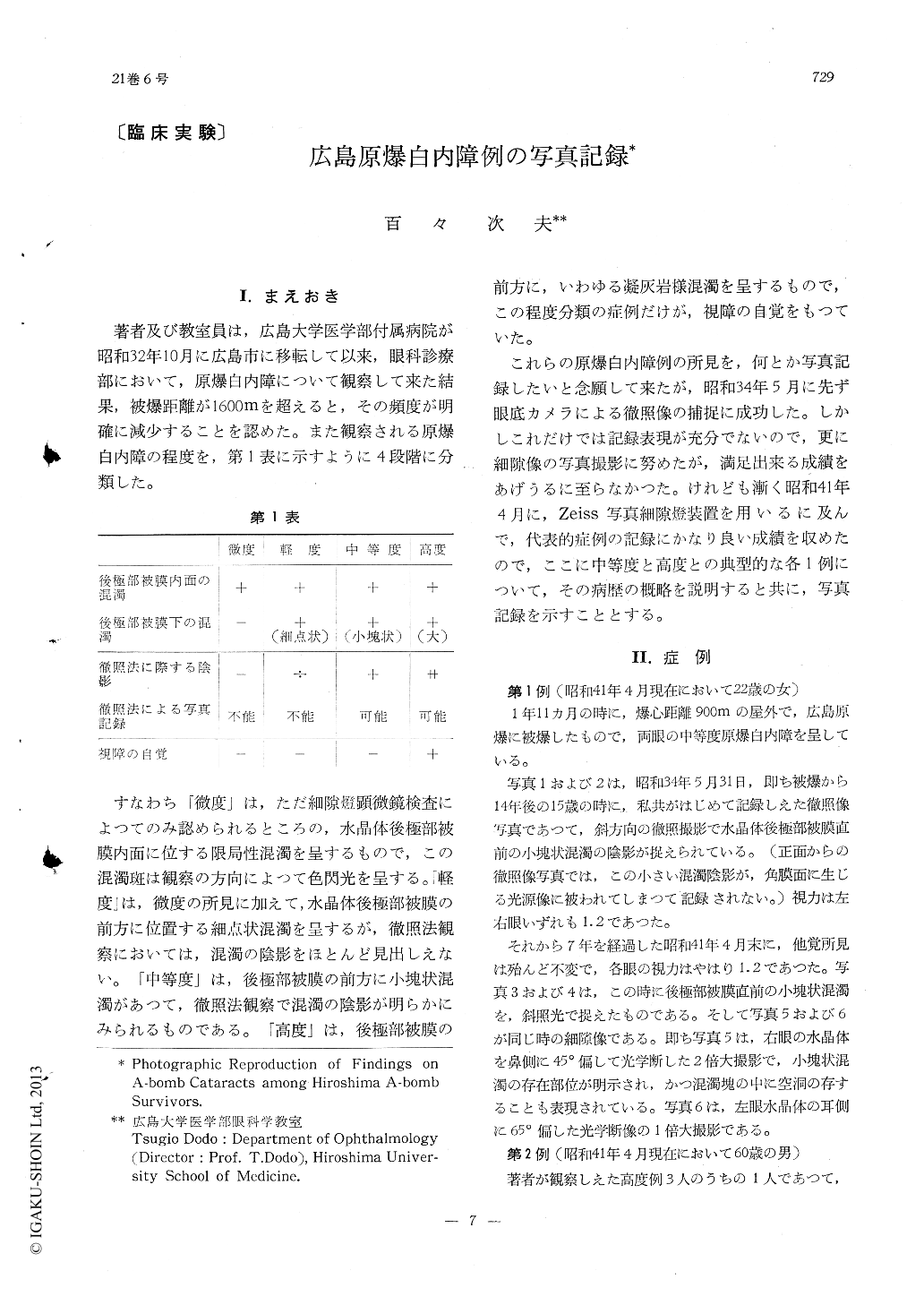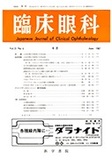Japanese
English
- 有料閲覧
- Abstract 文献概要
- 1ページ目 Look Inside
I.まえおき
著者及び教室員は,広島大学医学部付属病院が昭和32年10月に広島市に移転して以来,眼科診療部において,原爆白内障について観察して来た結果,被爆距離が1600mを超えると,その頻度が明確に減少することを認めた。また観察される原爆白内障の程度を,第1表に示すように4段階に分類した。
すなわち「微度」は,ただ細隙燈顕微鏡検査によつてのみ認められるところの,水晶体後極部被膜内面に位する限局性混濁を呈するもので,この混濁斑は観察の方向によつて色閃光を呈する。「軽度」は,微度の所見に加えて,水晶体後極部被膜の前方に位置する細点状混濁を呈するが,徹照法観察においては,混濁の陰影をほとんど見出しえない。「中等度」は,後極部被膜の前方に小塊状混濁があつて,徹照法観察で混濁の陰影が明らかにみられるものである。「高度」は,後極部被膜の前方に,いわゆる凝灰岩様混濁を呈するもので,この程度分類の症例だけが,視障の自覚をもつていた。
The authors have succeeded in photographic documentation of posterior subcapsular cataract which is a characteristic feature among atomic bomb survivors in Hiroshima. Earlier screening works of the authors have shown that the incidence of cataract rises sharply if the subject happened to be within 1,600 meters of the hy-pocenter at the time of explosion on Aug. 6th, 1945. Two illustrative cases are shown in the colored photograph section.
Figg. 1 to 6 belong to a female, now 22 years of age, who was irradiated by the A-bomb at the distance of 900 meters at the age of lyear and 11 months.

Copyright © 1967, Igaku-Shoin Ltd. All rights reserved.


